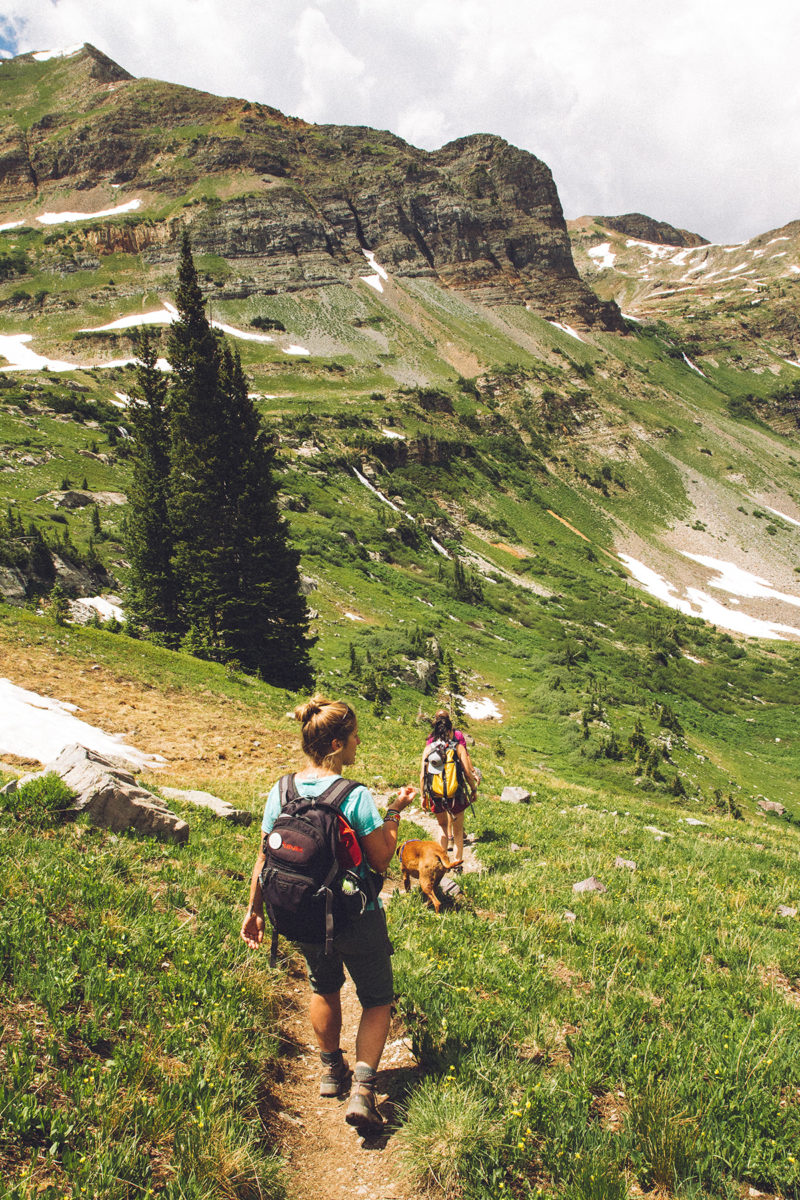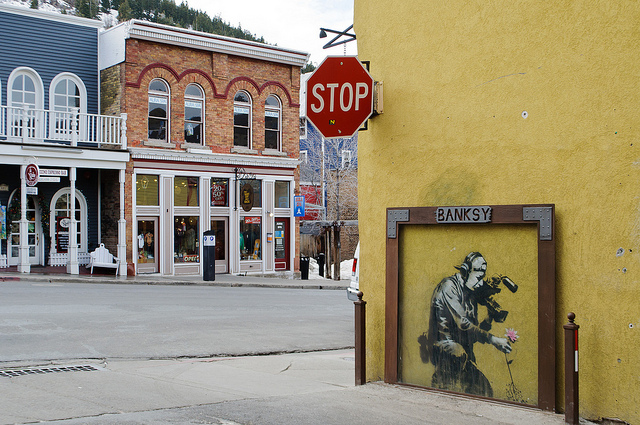The traditional definition of “high altitude” is anything above 6,000 feet above sea level. Park City’s elevation is 7,000 feet above sea level. Don’t let that number fool you, though.
Park City is a very vertical destination, climbing up hillsides and down into valleys. You might find yourself somewhere between 6,500 and 10,000 feet above sea level while exploring the area. Make sure to prepare yourself and exercise caution lest you experience the effects of altitude sickness.
Altitude Sickness
Altitude sickness is a blanket term that describes several distinct conditions that travelers may experience at altitudes above 6,000 feet. The root cause of all altitude sickness is oxygen. Hypoxia (a lack of oxygen) is bad for humans.
The air gets thinner (less oxygenated), and the higher you rise above the planet’s surface, the more you rise. Above 6,000 feet, the atmosphere has so little oxygen that the human body has difficulty adjusting. Altitude sickness is experienced in three stages.
- Stage 1: The first stage is Acute Mountain Sickness. Symptoms of AMS include nausea, fatigue, dizziness, and headaches. This is the only form of altitude sickness that most visitors will experience.
- Stages 2 and 3: Rising further can result in a High-Altitude Pulmonary Edema (HAPE) and/or a High-Altitude Cerebral Edema (HACE). These conditions involve fluid filling the lungs and the brain cavity. They cause everything from shortness of breath and fever to confusion and vomiting. HAPE and HACE are both potentially fatal if untreated, especially HACE.
How To Combat Altitude Sickness
You can take steps to acclimate yourself and help your body compensate for the sudden change in atmospheric oxygen. Keep these tips in mind when you visit Park City.

- Stay Hydrated – The elevation of Park City also makes it easy to get dehydrated. Your body has a harder time holding onto liquids at higher altitudes. Make sure to replenish your fluids by drinking four to six liters of water each day during your stay. That might seem like a lot, but you will need every drop. Dehydration makes altitude sickness a lot worse.
- Load Up On Carbs – There’s something you rarely hear these days. But it’s true. You need carbs-lots of them-at higher altitudes. Your body works harder to do everything at 7,000 feet. It needs plenty of calories to keep you skiing in peak condition. Grab that extra plate of pasta and get back on the piste.
- Give Yourself Time – There isn’t any way to get around it. Adjusting to Park City’s elevation requires time. It can take as long as two to three days for your cardiovascular system to get acclimated. This is especially true if you spend most of your time near sea level. You can’t just tough it out. Take your time and get comfortable.
- Ascend Slowly – Once you’re here, add 1,000 feet to your elevation (or less) each day. Continuing to ascend when you aren’t acclimatized is the primary cause of HAPE and HACE. Don’t hurt yourself by climbing too far, too fast.
- Stick Together – One of the most insidious things about altitude sickness is that it affects your cognition. Your perception and decision-making can be significantly impaired if you suffer from altitude sickness. Don’t adventure by yourself if you aren’t used to the altitude. You could make a poor decision and not even know it. You could get lost or injured due to your oxygen-deprived brain. Keep others around to keep an eye on you. Observe the buddy system, at the very least, when exploring.
- Seek Medical Attention – If you experience any severe symptoms of altitude sickness during your stay, seek medical attention. While HAPE and HACE are uncommon at the elevation of Park City, patients are admitted to the hospital each year with serious complications due to altitude sickness. In the worst cases, HAPE and HACE can be fatal. Don’t take a chance. Seek help if you experience any of the symptoms associated with severe altitude sickness.
Will You Get Drunk Faster in Park City?

The human body’s chemistry relies heavily on maintaining a healthy supply of oxygen in your bloodstream. Certain substances, like alcohol and caffeine, play with the balance of oxygen available to your brain.
Traditional wisdom says that you can get drunk faster at higher elevations. It makes sense. Alcohol reduces available blood oxygen while your body metabolizes a drink. So lower atmospheric oxygen should make the process even worse, right? Well, the answer is yes and no. Your blood alcohol level won’t be any higher after four drinks in Park City than after four drinks in Seattle or New York. But your mental faculties will be more impaired.
Why? Your brain is already impaired before drink number one in Park City. Any dizziness, nausea, fatigue, and headaches you may experience as a result of your intoxication are just piled on top of the symptoms you may already be experiencing as a result of our elevation.
So, you won’t actually be more intoxicated while you experience the nightlife of Park City, Utah. But you should exercise caution while partaking of any substance that might affect your cognitive functions while hanging out at 7,000 feet above sea level.
High-Altitude Cooking
Cooking is functional chemistry for hungry people. As we’ve already mentioned, high-altitude environments play havoc with fundamental chemical interactions. Lower atmospheric pressure not only removes oxygen from the air it also makes it easier for water to evaporate and decreases the temperature at which water boils. These are some of the basic building blocks of food science. Changing these factors will alter almost every recipe in your repertoire.
Here are a couple of quick notes that will help in general, though some recipes may require specific high-altitude changes:

- Cook Your Food Longer – Since water boils at a lower temperature at higher elevations, anything that relies on water to cook has to cook for longer to raise internal temperatures to the desired level. That includes most recipes to one degree or another. Turning up the heat doesn’t help because water can’t get hotter than its boiling point. All that accomplishes is speeding up the rate at which your food loses moisture and dries out.
- Add More Liquid – Water evaporates more quickly at higher elevations, so you must compensate by adding more liquid. That means more water, broth, tomato sauce, or whatever to keep your food from drying. Anticipate the additional evaporation, and everything will turn out just right.
- Cover Your Food – Besides adding more liquid, you might consider covering your food as it cooks. Putting a lid on that pot or skillet will trap steam and minimize moisture loss in your meal.
- Beware of Dry Meat—Meat is approximately 75 percent water. Due to the loss of atmospheric pressure, many meat cuts will take longer to cook and turn out drier in the mountains. Braised, boiled, and similar dishes suffer the most. Roasted and baked meats cook almost as well at elevation as at sea level. Adjust your menu accordingly.
- Microwaves Work Faster – Some foods heat up faster at higher altitudes than at sea level. Since microwaves work by exciting water molecules in your food, the higher rate of evaporation speeds up the process. High-moisture dishes may still be cooked for as long as usual.
- Try a Pressure Cooker – Most of the adjustments suggested here are based on the difference in atmospheric experience at higher elevations. Pressure cookers eliminate those differences by creating their atmosphere. You don’t have to change pressure-cooked meals because there is no functional difference between zero and 10,000 feet above sea level. These handy tools become indispensable for easy meal prep for those living at the elevation of Park City.
Mental Health
The lower atmospheric pressure here can hurt human emotional states. Studies point to symptoms like depression, irritability, and other disruptions to emotional health at higher elevations. In fact, the elevation of Park City and other areas of the Intermountain West has been theorized to be a significant factor in elevated rates of clinical depression and suicide in the region. Always remember to safeguard your mental health during your visit to Park City and your daily life. Resources are available.
High-Level Lodging
You’re fully equipped to handle the challenges of life above 6,000 feet. Now that you’re prepared for the elevation of Park City, it’s time to choose your lodging for that epic ski trip or mountain hiking adventure. All Seasons Resort Lodging offers a complete selection of condos, townhomes, and vacation homes that will keep you well-rested and ready to tackle excitement at any altitude. You can always be sure that you’re getting the best deal on your Park City vacation rental when you book directly, thanks to our Lowest Rate Guarantee!
Stay the night in one of our Park City vacation rentals.
VIEW PARK CITY VACATION RENTALS
Frequently Asked Questions
What’s the elevation of Park City, Utah?
Park City, Utah, is 7,000 feet (2,134 meters) above sea level.
Can I get altitude sickness in Park City?
Yes, it’s possible to get altitude sickness in Park City. It is caused by a lack of oxygen and dehydration.
What’s the highest elevation in Park City, Utah?
The highest point in Park City is Guardsman Peak, with an elevation of 10,026 feet (3,056 meters) at the top of the Jupiter chair lift.
What’s the altitude of Deer Valley?
Deer Valley’s altitude is 6,623 feet (2,019 meters), located at the Jordanelle Express Gondola. The highest point is at the top of the Empire Express chair lift, with an elevation of 9,560 feet (2,9134 meters), which means it has a vertical rise/drop of 2,937 feet (895 meters).
What’s the elevation of Canyons Village?
Canyons Village at Park City Ski Resort is 6,900 feet (2,115 meters).
What’s the elevation of Jupiter Peak?
Jupiter Peak is the prominent peak in Park City, Utah, with an elevation of 9,980 feet (3,042 meters).
What are the four highest peaks at Park City Ski Resort?
Of the four highest peaks at Park City Ski Resort, two are on the Park City Mountain Village side, and two are on the Canyons Village side.
Park City Mountain Village has Jupiter Peak, which is 9,980 feet (3,042 meters) high and accessible by the McConkey Express lift. The second peak on the Mountain Village side is Guardsman Peak, which is 10,026 feet (3,056 meters) high and accessible via the Jupiter Lift.
On the Canyons Village side, you have Desolation Peak, with an elevation of 9,990 feet (3,045 meters) and serviced by the 9990 Express lift. The fourth is Murdock Bowl, at 9,365 feet (2,854 meters) and accessed via the Super Condor Express lift.
What’s the vertical drop of Park City?
Park City has a vertical drop of 3,126 feet (953 meters). The highest point is Jupiter Peak on the Mountain Village side, and the lowest is at Canyons Village.
What’s the elevation of Kimball Junction, Utah?
Kimball Junction, Utah, has an elevation of 6,440 feet (1,963 meters).
What’s the elevation of Salt Lake City, Utah?
Salt Lake City, Utah, has an elevation of 4,265 feet (1,300 meters).
Related Articles
Things to Do During Park City’s Mud Season
Our Picks for Mountain Bike Rentals Park City


![Your Guide To Park City Mountain Lift Tickets [2024-2025] Your Guide To Park City Mountain Lift Tickets [2024-2025]](https://www.allseasonsresortlodging.com/wp-content/uploads/2023/09/ski-slope-from-lift_1024x1440-1.jpg)
